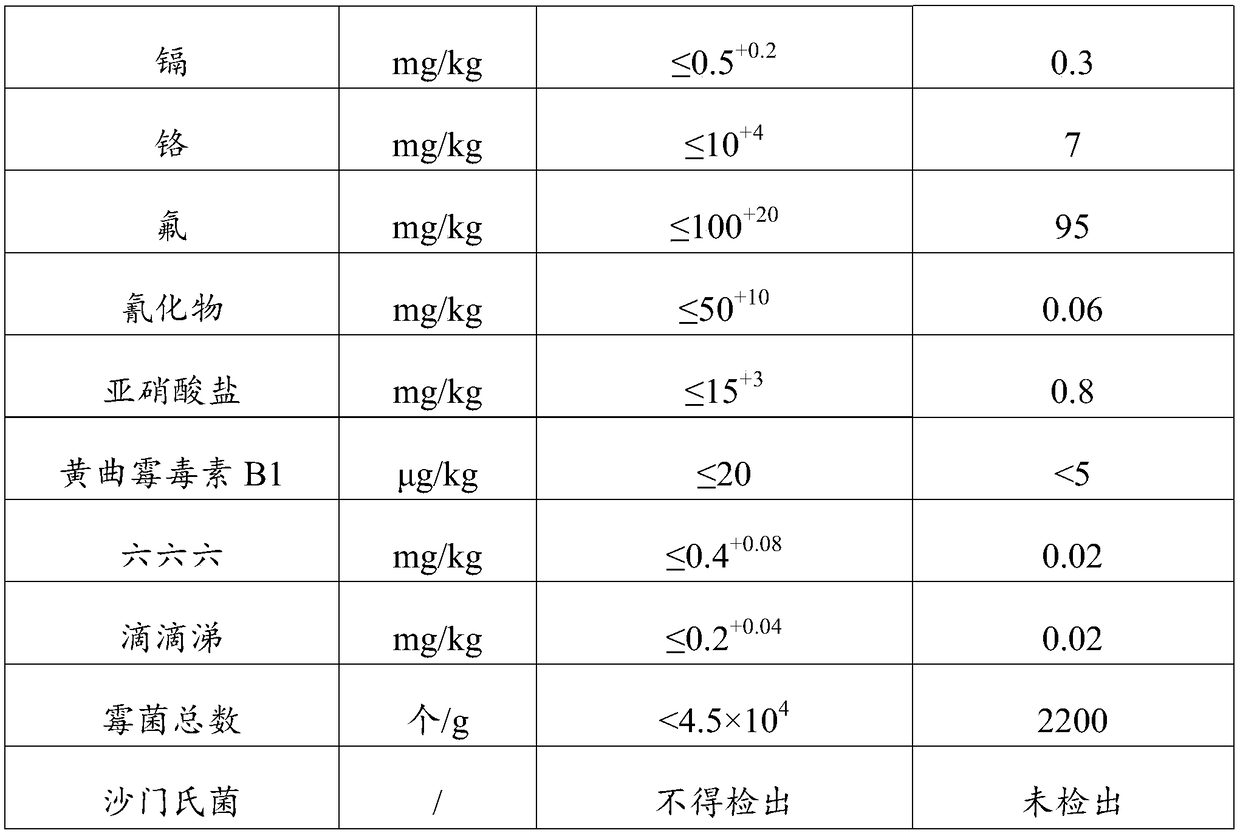Pollution-free freshwater fish feed and preparation method thereof
A freshwater fish and feed technology, applied in animal feed, animal feed, bacteria used in food preparation, etc., can solve the problems of high cost, poor absorption by fish, polluted water quality, etc. The effect of digestibility and absorption, firm structure
- Summary
- Abstract
- Description
- Claims
- Application Information
AI Technical Summary
Problems solved by technology
Method used
Image
Examples
Embodiment 1
[0050] The pollution-free freshwater fish feed includes the following raw materials in weight percentage: 15% of fermented sugarcane filter mud, 20% of fermented cassava dregs, 20% of fermented grain bran, 20% of wheat bran, 5% of soybean meal, 10% of silkworm chrysalis powder and 10% of fish meal .
[0051] The preparation method of above-mentioned pollution-free freshwater fish feed comprises the following steps:
[0052] (1) Preparation of inoculum: take peanut shell powder, add water in equal parts, sterilize at high temperature for 30 minutes (121°C, 103kPa), cool to 20°C, and then add mixed strains, the mixed strains are Bacillus subtilis , lactic acid bacteria, saccharomyces, photosynthetic bacteria and bifidobacteria, cultivated at room temperature for 10 hours to obtain the inoculum;
[0053] (2) Preparation of fermented sugarcane filter mud: the inoculum obtained in step (1) is mixed with C1 enzyme, CX enzyme, β-glucosidase, and the weight ratio of the inoculum and ...
Embodiment 2
[0058] The pollution-free freshwater fish feed includes the following raw materials in weight percentage: 40% of fermented sugarcane filter mud, 2% of fermented cassava dregs, 2% of fermented grain bran, 2% of wheat bran, 30% of soybean meal, 5% of silkworm chrysalis powder and 19% of fish meal .
[0059] The preparation method of above-mentioned pollution-free freshwater fish feed comprises the following steps:
[0060] (1) Preparation of inoculum: Take peanut shell powder, add water in equal parts, sterilize at high temperature for 30 minutes (121°C, 103kPa), cool to 38°C, and then add mixed strains, the mixed strains are Bacillus subtilis , lactic acid bacteria, saccharomyces, photosynthetic bacteria and bifidobacteria, cultivated at room temperature for 20 hours to obtain the inoculum;
[0061] (2) Preparation of fermented sugarcane filter mud: the inoculum obtained in step (1) is mixed with C1 enzyme, CX enzyme, β-glucosidase, and the weight ratio of the inoculum and C1 ...
Embodiment 3
[0067] The pollution-free freshwater fish feed includes the following raw materials in weight percentage: 15% of fermented sugarcane filter mud, 5% of fermented cassava dregs, 5% of fermented rice bran, 10% of wheat bran, 5% of soybean meal, 20% of silkworm chrysalis powder and 40% of fish meal .
[0068]The preparation method of above-mentioned pollution-free freshwater fish feed comprises the following steps:
[0069] (1) Preparation of inoculum: Take peanut shell powder, add water in equal parts, sterilize at high temperature for 30 minutes (121°C, 103kPa), cool to 35°C, and then add mixed strains, the mixed strains are Bacillus subtilis , lactic acid bacteria, saccharomyces, photosynthetic bacteria and bifidobacteria, cultivated at room temperature for 12 hours to obtain the inoculum;
[0070] (2) Preparation of fermented sugarcane filter mud: the inoculum obtained in step (1) is mixed with C1 enzyme, CX enzyme, β-glucosidase, and the weight ratio of the inoculum and C1 e...
PUM
 Login to View More
Login to View More Abstract
Description
Claims
Application Information
 Login to View More
Login to View More - R&D
- Intellectual Property
- Life Sciences
- Materials
- Tech Scout
- Unparalleled Data Quality
- Higher Quality Content
- 60% Fewer Hallucinations
Browse by: Latest US Patents, China's latest patents, Technical Efficacy Thesaurus, Application Domain, Technology Topic, Popular Technical Reports.
© 2025 PatSnap. All rights reserved.Legal|Privacy policy|Modern Slavery Act Transparency Statement|Sitemap|About US| Contact US: help@patsnap.com


